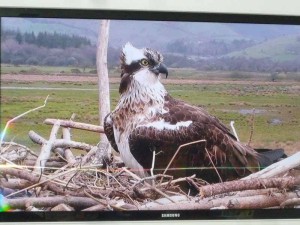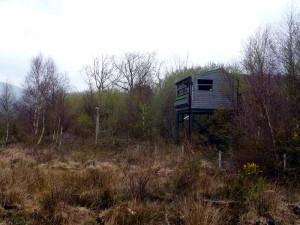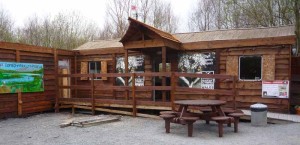Ros Dodd reports these will be only the second brood of osprey chicks in 400 years in this area of Wales.
In about two months from now, between one and three baby ospreys will almost certainly hatch in a nest of sticks on a platform overlooking the Dyfi Estuary in mid-Wales. Nothing remarkable in that, you might think; but in fact there is. For these will be only the second brood of osprey chicks in 400 years in this area of Wales.
So important is the return of these magnificent, fish-eating birds of prey to the valley that the Dyfi Osprey Project was up to protect and nurture them and, this year, the RAF has agreed not to fly lower than 500 feet until September to avoid disturbing the birds.
In fact, thanks to the advent of webcams and social media, Monty and Nora, the soon-to-be-proud parents, have acquired celebrity status thanks to regular appearances on the BBC’s Springwatch programmes. Regular updates on their nest-building, mating and hunting activities, captured by webcams, are posted on Facebook and Twitter almost daily.
Visitors to Monty and Nora’s home – midway between Wales’s ancient capital, Machynlleth, and the popular resort of Aberdovey – are increasing rapidly and even the national press carried the story of the RAF’s no-fly pledge.
Ospreys, sometimes known as a sea hawk or fish eagle, became extinct in the UK just under a century ago after hundreds of years of persecution. But they started to re-colonise parts of Scotland in the 1960s and today there are about 200 pairs north of the border.
In Wales, however, it was a different story. It wasn’t until relatively recently that ospreys were recorded as passing migrants (they head to the warmer climes of Africa during winter) and a few pairs nested and bred in different parts of the country.
In 2007, the Montgomeryshire Wildlife Trust erected a nest platform on Morfa Dyfi, next to the Cors Dyfi reserve – and the following year a pair of ospreys made it their summer home. It has been occupied every year since.
But it wasn’t until last year – 2011 – that a pair, Monty and Nora, successfully raised a brood of chicks, Leri, Dulas and Einion.
Shortly after the chicks hatched, the ospreys were featured on Springwatch, which was being broadcast from the nearby RSPB Ynys-hir reserve and the family became a popular feature of the series.
After Springwatch had ended, the BBC approached the Montgomeryshire Wildlife Trust with a proposal to satellite tag the three osprey youngsters so that their journeys to Africa could be followed on the forthcoming series of Autumnwatch. The BBC would fund two of the transmitters, if the Trust would fund the third. An appeal was set up and by the end of the first week enough money had been raised to pay for the third transmitter.
The youngsters were successfully tagged and all fledged during the summer. Although the signal for one bird has since been lost, it is hoped the three have survived.
This year, expectations are high that Nora and Monty, who arrived back at the Dyfi nest within a week of each other in late March/early April and began pair-bonding immediately, will raise a few family and cement the return of breeding ospreys to this beautiful part of Wales.
The Dyfi Osprey Project is open 10:00 ’til 18:00 every day until end of August.
Cors Dyfi is found at grid reference SN 701985, 3.5 miles south-west of Machynlleth on the A487 Aberystywth road, just south of Morben Isaf caravan Park. Post code SY20 8SR. Car parking is free.





